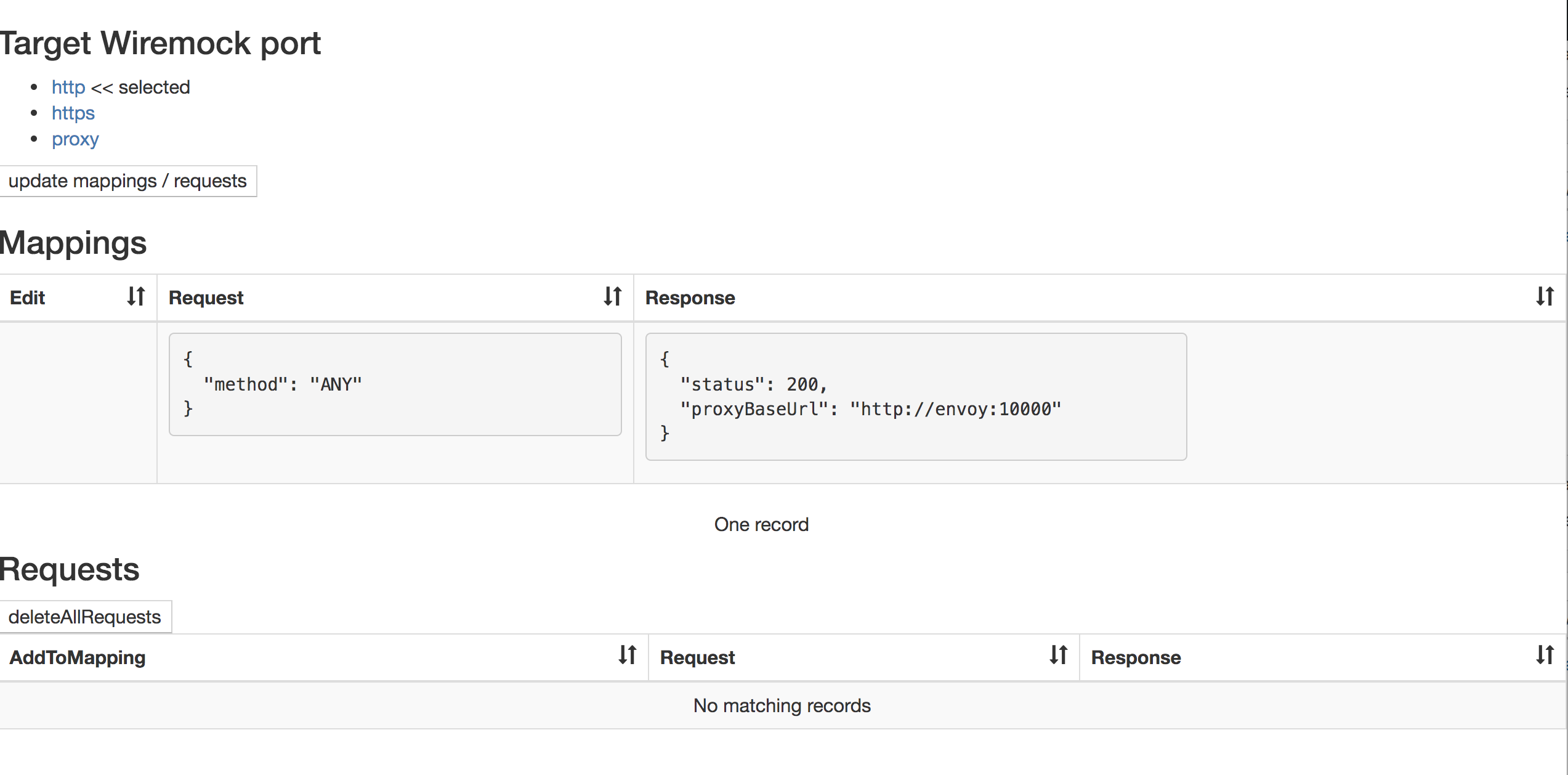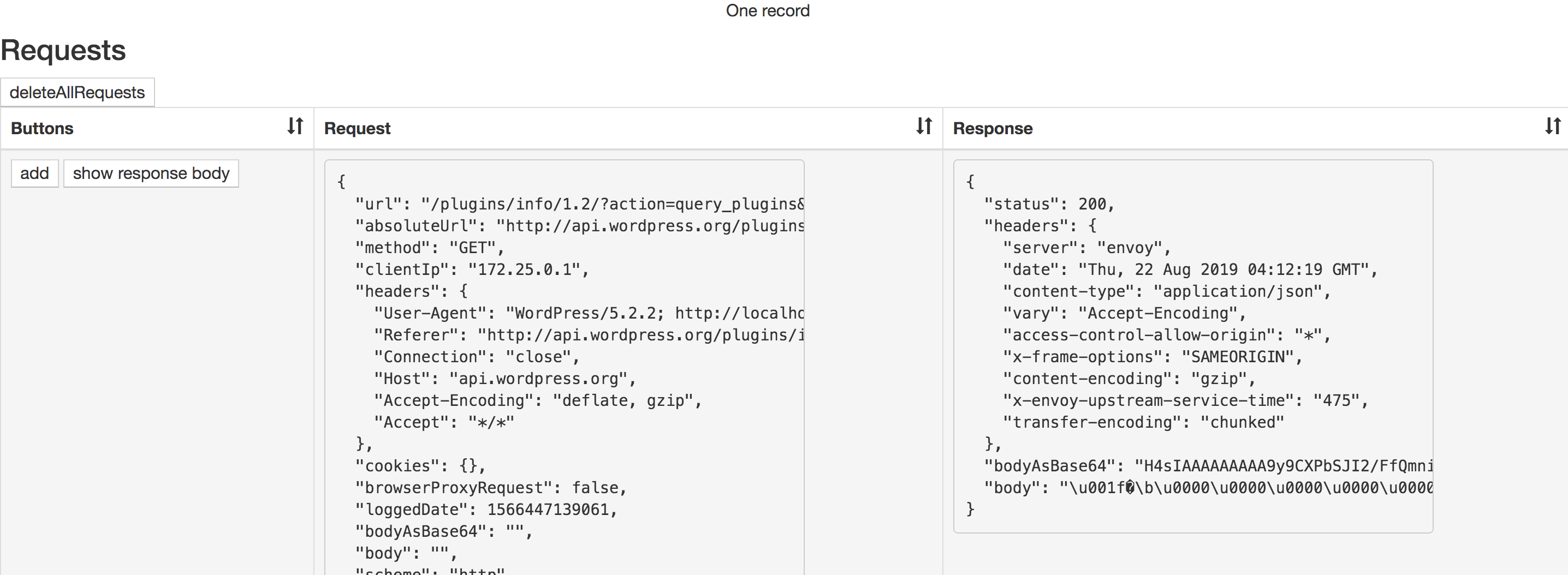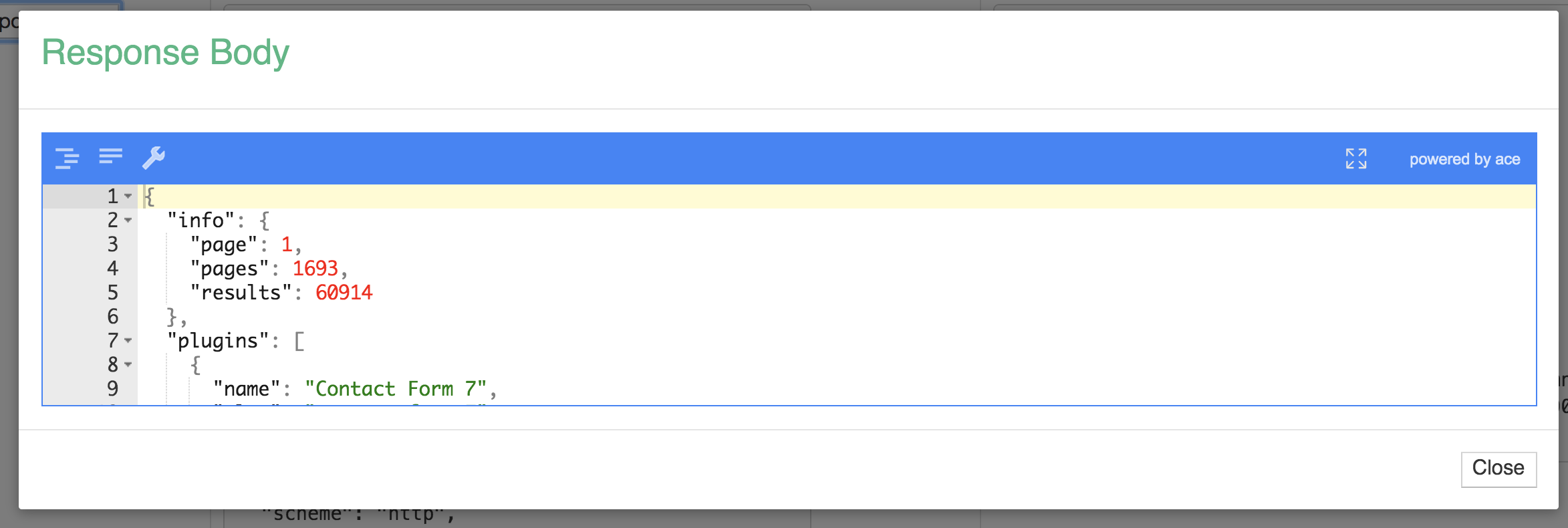For debugging or testing, engineers want to capture API requests and see the requests parameters / responses. And sometimes they want to modify API response for testing instead of manipulating test data.
This can
- record requests/responses for all http requests to API
- modify specific response to check the application behavior
without any changes on the application side. (to capture https request, application needs to ignore certification error.)
| original | with http-request-capture |
|---|---|
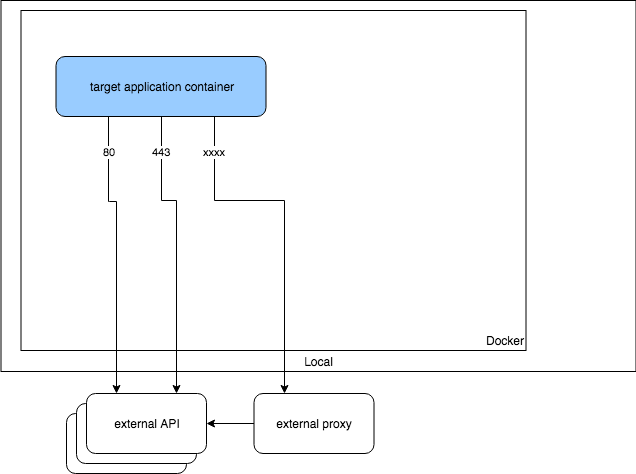 |
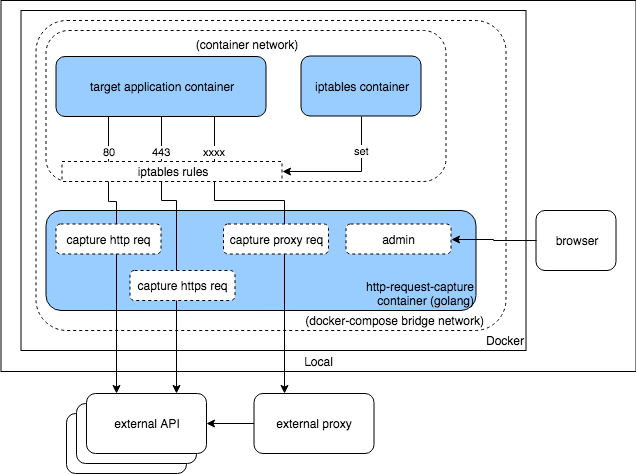 |
Docker container which runs application that calls API requests. iptables rules will be set by iptables container to this container's network.
This will be run with target container's network (--net container:{{container_name}}). And it sets iptables rules to route all request to specific port (80, 443 and proxy port if it's used) to request capture's ports.
It gets http API requests and passes them to actual API servers. And it records requests/responses. If there is mappings (that can be set by admin API) for a specific request, it returns a pre-set response.
It's almost same as http request capture. It provides self-singed certificate. So the application needs to ignore certification error.
It's almost same as http request capture. To capture https requests, it runs MITM (man in the middle) proxy based on elazarl/goproxy.
This provides web UI to manage requests/mappings.
It can
- List mappings (stub settings or routes settings)
- List requests (recorded requests and response)
- Add mapping settings based on actual request
- Update/Delete mapping
The page consists of pure HTML file and CDN version of Vue.js
All containers will be run with docker-compose. We need to pass necessary parameters to docker-compose as variables.
| Name | Example | Description |
|---|---|---|
| CONTAINER_NAME | development_web_1 | Target container name (or ID). You can check it with docker ps -a command. |
| NETWORK_NAME | development_default | If target container is using custom network (like docker-compose), please specify network name in order to enable container alias name access. Otherwise make it empty. You can check network name by docker inspect -f '{{.NetworkSettings.Networks}}' ${CONTAINER_NAME} command. |
| PROXY_URL | http://your-forward-proxy | Forward proxy server's url. |
| PROXY_PORT | 9000 | Forward proxy server's port. |
Note: PROXY_XXXX will be used for proxy-mode (not mandatory).
CONTAINER_NAME=##REPLACE HERE## \
NETWORK_NAME=##REPLACE HERE## \
docker-compose up -dCONTAINER_NAME=##REPLACE HERE## \
NETWORK_NAME=##REPLACE HERE## \
PROXY_URL=##REPLACE HERE## \
PROXY_PORT=##REPLACE HERE## \
docker-compose up -dGo to http://localhost:18080/
docker-compose down;Try http-request-capture with Wordpress on your local.
docker-compose -f example/docker-compose.yaml up -d- Open http://localhost:8000/
- Set up Wordpress with any values
- Log in to management UI (wp-admin)
CONTAINER_NAME=example_wordpress_1 \
NETWORK_NAME= \
docker-compose up -d- Go to http://localhost:8000/wp-admin/plugin-install.php?s&tab=search&type=term
- Click "update mappings / requests" on http://localhost:18080/
-> You can see Requests and Response
- Click "show response body"
-> You can see response body
- Click "add" on the "AddToMapping" column on http://localhost:18080/
- Click "update" on "Edit" column
- Modify info.results on "responseBody"

- Click "update"
- Go to http://localhost:8000/wp-admin/plugin-install.php?s&tab=search&type=term
-> The change would be seen on pagination.
NOTE: to capture https request, the application needs to IGNORE certification error.
- Go to http://localhost:8000/wp-admin/theme-editor.php?file=functions.php&theme=twentynineteen
- Add this on the bottom of the file
add_action('http_api_curl', function( $handle ){
curl_setopt($handle, CURLOPT_SSL_VERIFYPEER, false);
curl_setopt($handle, CURLOPT_SSL_VERIFYHOST, false);
}, 10);
- Click "Update File"
- Click "https" on http://localhost:18080/
- Go to http://localhost:8000/wp-admin/plugin-install.php?s&tab=search&type=term
- Click "update mappings / requests" on http://localhost:18080/
-> You can see Requests and Response of https requests
docker-compose down;CONTAINER_NAME=example_wordpress_1 \
NETWORK_NAME=example_default \
PROXY_URL=http://goproxy \
PROXY_PORT=8080 \
docker-compose up -d- Go to http://localhost:8000/wp-admin/theme-editor.php?file=functions.php&theme=twentynineteen
- Add this on the bottom of the file
add_action('http_api_curl', function( $handle ){
$info = curl_getinfo($handle);
if (strpos($info['url'], '//localhost') === false) {
curl_setopt($handle, CURLOPT_SSL_VERIFYPEER, false);
curl_setopt($handle, CURLOPT_SSL_VERIFYHOST, false);
curl_setopt($handle, CURLOPT_PROXY, "goproxy");
curl_setopt($handle, CURLOPT_PROXYPORT, 8080);
}
}, 10);
- Click "Update File"
- Click "proxy" on http://localhost:18080/
- Go to http://localhost:8000/wp-admin/plugin-install.php?s&tab=search&type=term
- Click "update mappings / requests" on http://localhost:18080/
-> You can see Requests and Response of proxy requests
docker-compose down;
docker-compose -f example/docker-compose.yaml down;MIT
